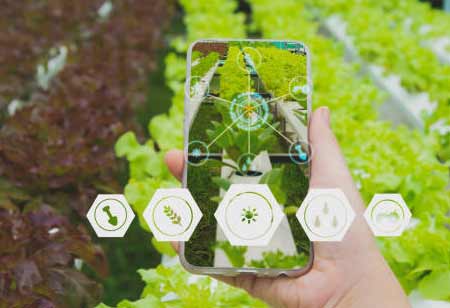Thank you for Subscribing to Agri Business Review Weekly Brief
Future Market Potential for Autonomous Crop Management
From 2022 to 2030, the worldwide market for autonomous crop management will increase from its 2021 valuation of USD 1.45 billion at a CAGR (compound annual growth rate) of 16.2 percent.

By
Agri Business Review | Sunday, February 19, 2023
Stay ahead of the industry with exclusive feature stories on the top companies, expert insights and the latest news delivered straight to your inbox. Subscribe today.
Globally, the autonomous crop management market size was USD 1.45 billion in 2021 and will grow at a CAGR of 16.2 percent through 2030.
FREMONT, CA: From 2022 to 2030, the worldwide market for autonomous crop management will increase from its 2021 valuation of USD 1.45 billion at a CAGR (compound annual growth rate) of 16.2 percent. Farmer awareness of benefits such as enhanced crop planning and tracking, labor cost lessening, and weather forecasts is driving business expansion. The ever-increasing global population and the growing use of cloud computing also contribute to the development.
The program enables farmers to follow environmentally beneficial agricultural techniques, thereby reducing water consumption, fertilizers, and pesticides and ensuring food safety. In addition, contemporary agricultural practices would replace inefficient conventional agricultural processes, assisting the agriculture industry in addressing sustainability concerns. This move will positively impact the autonomous crop management industry's growth over the projection period.
Farmers will emphasize agricultural productivity, yield, and farm efficiency during the projected period. Agronomy will benefit from technological advancements. Agricultural production can be increased through big data analysis using autonomous crop management, reengineering business processes, and making real-time operational decisions based on predictive insights.
The FAO of the United Nations estimates that 70 percent of global food production will increase by 2050. Increasing food demand in densely populated nations such as India and China requires precision farming. Data management operations such as planning, purchasing, harvesting, feeding, marketing, and inventory control are streamlined with artificial intelligence and machine learning. Agricultural processes that capture data in real time facilitate analysis and decision-making.
Many production facilities in India, China, Japan, the United States, and Europe temporarily ceased operations due to the COVID-19 pandemic. The outbreak has badly impacted agriculture, and crop management systems are crucial in managing agricultural output issues. Numerous businesses are employing novel approaches to deliver more functional tools and address the increased need for food. Post-COVID-19, however, crop management software technologies and remote sensing could increase uptake. Companies have already begun emphasizing wireless platforms to facilitate real-time decision-making for crop health monitoring, irrigation scheduling, harvest management, and field mapping.
A key supplier, widespread adoption of modern technology, and increased crop management solutions in North America contributed to North America's market share in 2021. Farmers' high wealth and purchasing power in industrialized nations like the United States and Canada also influence crop management system adoption. Farmers in developing countries are disadvantaged due to the substantial investments required for digital farming. Smart agriculture needs a relatively large capital investment, but it gives a significant return on investment by increasing crop productivity and raising crop resilience.





